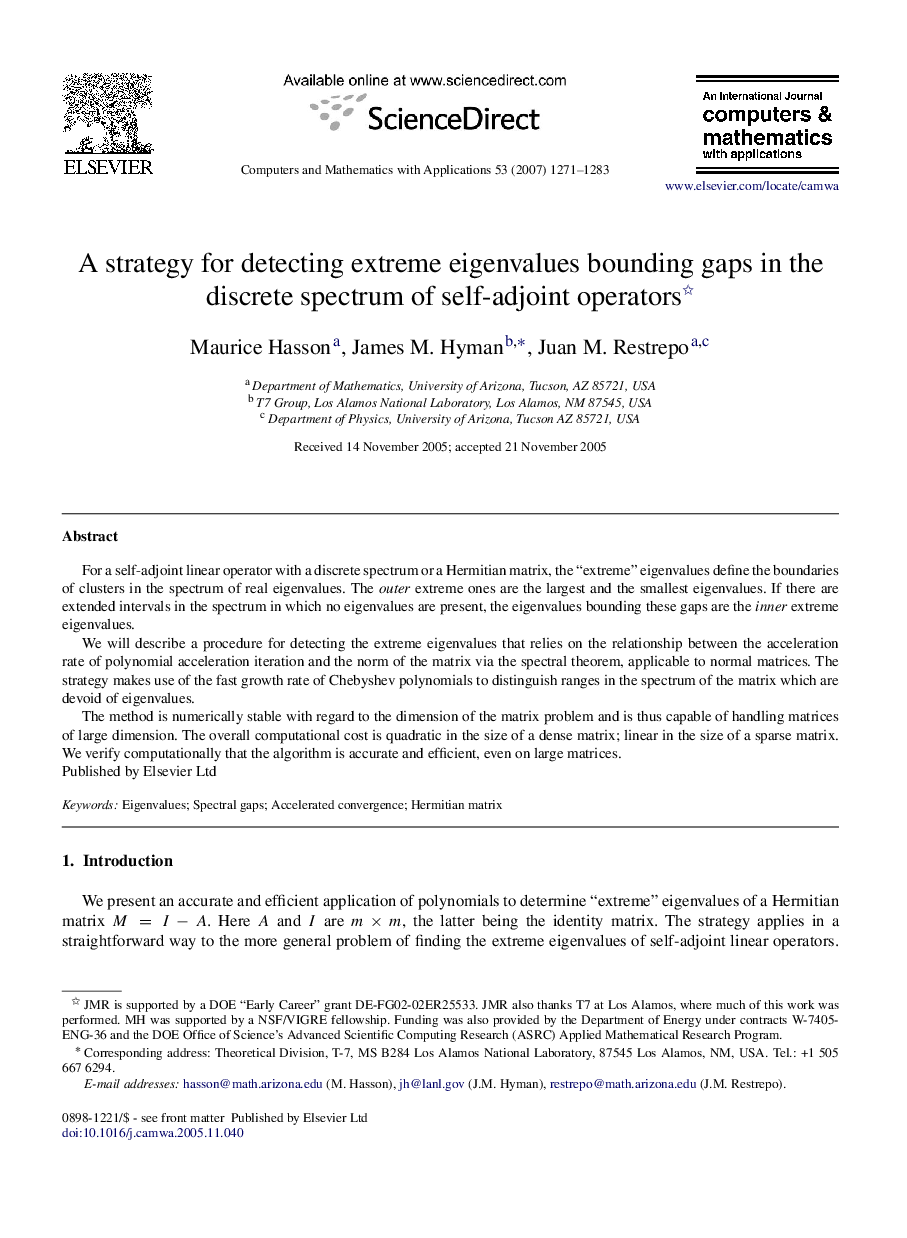| Article ID | Journal | Published Year | Pages | File Type |
|---|---|---|---|---|
| 474470 | Computers & Mathematics with Applications | 2007 | 13 Pages |
For a self-adjoint linear operator with a discrete spectrum or a Hermitian matrix, the “extreme” eigenvalues define the boundaries of clusters in the spectrum of real eigenvalues. The outer extreme ones are the largest and the smallest eigenvalues. If there are extended intervals in the spectrum in which no eigenvalues are present, the eigenvalues bounding these gaps are the inner extreme eigenvalues.We will describe a procedure for detecting the extreme eigenvalues that relies on the relationship between the acceleration rate of polynomial acceleration iteration and the norm of the matrix via the spectral theorem, applicable to normal matrices. The strategy makes use of the fast growth rate of Chebyshev polynomials to distinguish ranges in the spectrum of the matrix which are devoid of eigenvalues.The method is numerically stable with regard to the dimension of the matrix problem and is thus capable of handling matrices of large dimension. The overall computational cost is quadratic in the size of a dense matrix; linear in the size of a sparse matrix. We verify computationally that the algorithm is accurate and efficient, even on large matrices.
